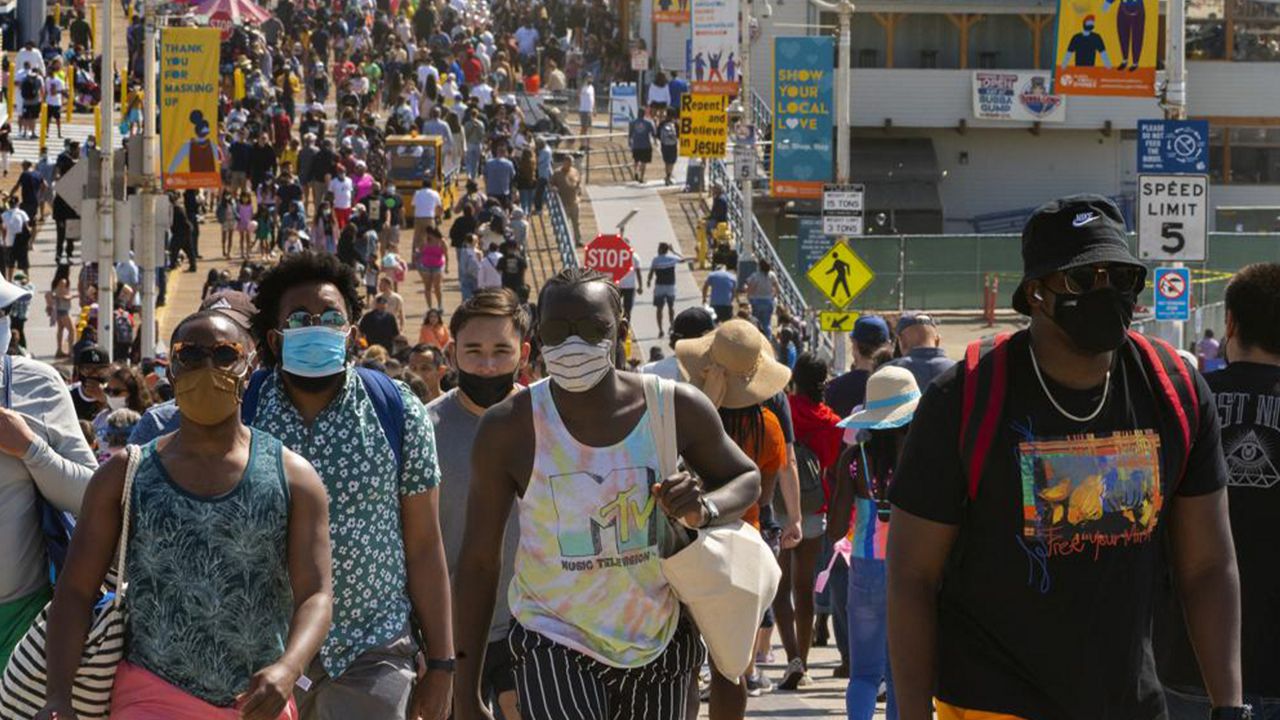SACRAMENTO, Calif. (AP) — California regulators on Thursday are set to approve revised worksite pandemic rules that allow fully vaccinated employees the same freedoms as when they are off the job.
The revised regulations would conform with general state guidelines that took effect Tuesday by ending most mask rules for people who are vaccinated against the coronavirus.
Gov. Gavin Newsom promised on the eve of the meeting that the seven-member, governor-appointed California Occupational Safety and Health Standards Board “will codify that through a vote.”
Newsom said he will then quickly issue an executive order sidestepping the usual legal review that would normally keep the rules from taking effect until June 28.
“If there’s any ambiguity, if there’s concerns around enforcement, we’ll clarify that. I have a draft executive order ready to go immediately after they vote to make clarifications public and to provide more certainty,” the governor said.
The rules apply in almost every workplace in the state, including to workers in offices, factories and retail.
The move comes after the board did a double-twisting backflip in recent weeks when it first postponed, then rejected, then adopted, then rescinded proposed rules that would have allowed workers to forego masks only if every employee in a room was fully vaccinated against the coronavirus.
The new regulations conform with general state guidelines patterned after the latest U.S. Centers for Disease Control and Prevention recommendations.
Fully vaccinated employees will not need to wear masks, except in locations like mass transit and classrooms where they are required for everyone, or in the event of outbreaks.
Physical distancing will also end except for certain workers during major outbreaks.
Vaccinated employees also won’t need to be tested or quarantined unless they show symptoms, even if they have close contact with an infected person.
Employers must document that workers who skip masks indoors are indeed fully vaccinated. But employers have the choice of requiring workers to show proof of vaccination or allowing employees to self-attest to their vaccination status, with the employer keeping a record of who self-attests.
They could also decide to require everyone to remain masked — vaccinated or not. And vaccinated employees will still be able to wear masks if they choose without facing retaliation.
The California Chamber of Commerce in a statement thanked Newsom, a Democrat, for eliminating confusion by pledging to conform workplace rules with the state’s loosened pandemic precautions.
That includes immediately ending social distancing obligations instead of waiting until July 31, as California’s Division of Occupational Safety and Health, known as Cal/OSHA, had initially proposed.
The chamber also praised a rule change that will require employers to provide the most effective N95 masks for free to unvaccinated employees only upon request.
Helen Cleary, director of the Phylmar Regulatory Roundtable, a coalition of large businesses with major California operations, said allowing workers to self-attest is helpful, though her coalition still objects to requiring employers to document employees’ vaccine status.
Requiring employers to provide N95 masks even upon request will still require them to stockpile the most efficient face coverings, she said.
Everyone will need to remain masked in places such as public transit, indoor school classes, health care facilities and evacuation centers.










